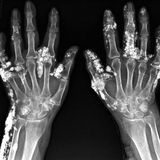
Symptomatic Gallstones: If a person with gallstones experiences symptoms such as recurrent abdominal pain, often in the upper right or middle of the abdomen, especially after eating fatty or greasy foods, cholecystectomy may be considered. Acute Cholecystitis: This is inflammation of the gallbladder often caused by gallstones blocking the cystic duct. It presents with severe abdominal pain, fever, and sometimes jaundice. Emergency cholecystectomy is often needed to treat this condition. Biliary Colic: This refers to sudden and intense pain caused by gallstones temporarily blocking the bile ducts. While the pain usually subsides as the stone shifts, recurrent episodes may prompt the need for cholecystectomy. Choledocholithiasis: When gallstones migrate from the gallbladder and become lodged in the common bile duct, causing pain and potential blockage of bile flow, cholecystectomy and bile duct exploration might be necessary. Gallstone Pancreatitis: Gallstones can block the pancreatic duct, leading to inflammation of the pancreas (pancreatitis). If this occurs, urgent cholecystectomy may be required. Gallbladder Polyps: While most polyps are benign, larger ones might carry a risk of malignancy. Depending on their size and characteristics, cholecystectomy could be recommended. Porcelain Gallbladder: This condition involves extensive calcification of the gallbladder wall, which can increase the risk of gallbladder cancer. Cholecystectomy may be performed as a preventive measure. Gallbladder Cancer: If gallbladder cancer is diagnosed, cholecystectomy is usually recommended, often along with additional treatments like chemotherapy.


